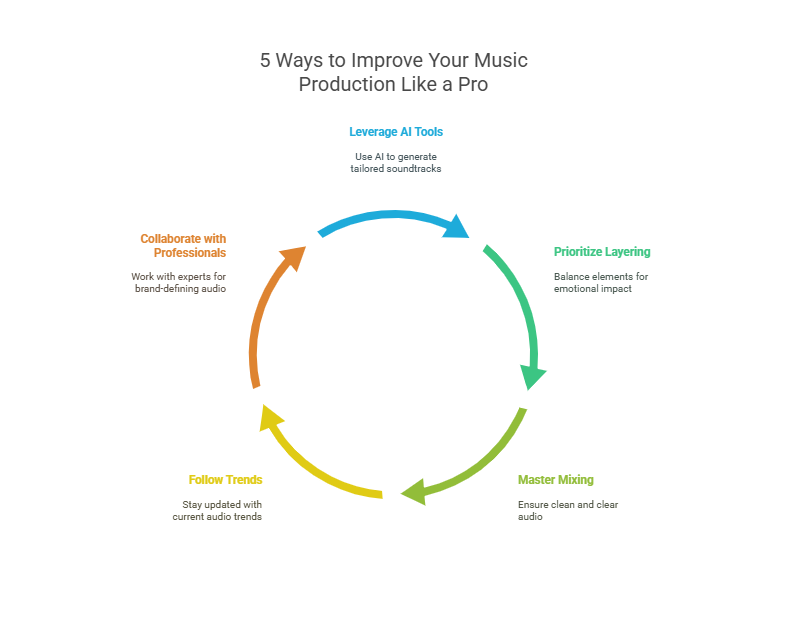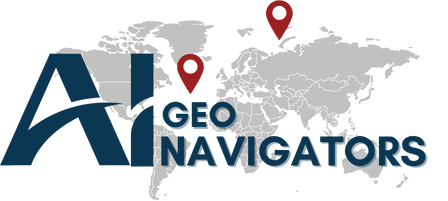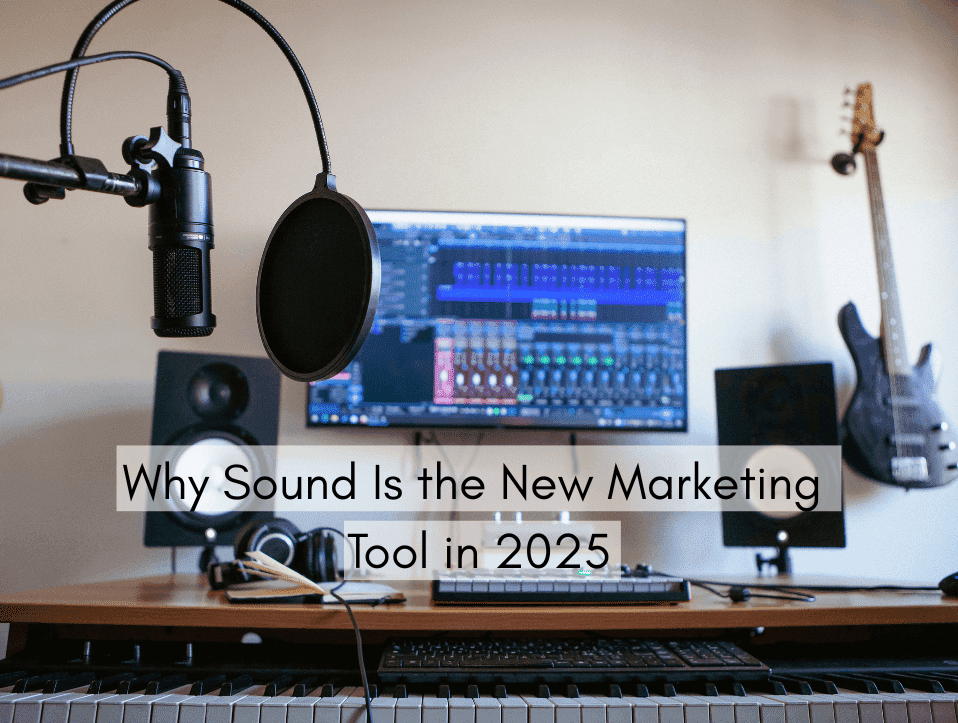In an visually oversaturated world, marketers in 2025 are turning to audio’s mighty, emotional, and underutilized senses of hearing. As visuals rule social media, branding, and websites, sound is becoming the new territory of engagement with brands.
Be it the ear worm jingle of an ad, the voice of a virtual assistant, or the rich soundscape of a podcast, brands are coming to understand that sound doesn’t just enhance their message.
Welcome to 2025, where audio is the new marketing tool, fueled by technological advancement, changing audience behavior, and the emotional potential of sound.
5 Ways to Improve Your Music Production Like a Pro

Before diving into how brands are using sound as a marketing tool, it’s important to understand what goes into creating quality audio. Whether you’re producing podcast intros, background scores for ads, or immersive sound logos, professional-grade music production is essential. Here are five ways to improve your music production like a pro:
1. Leverage AI-Powered Tools
With tools like AIVA, Amper Music, and Sound raw, you can generate high-quality soundtracks tailored to your brand tone. These tools use AI to compose royalty-free music with emotional impact—saving time and costs while allowing for personalization at scale.
2. Prioritize Layering and Dynamics
Effective audio isn’t about complexity, it’s about balance. Blend ambient textures, voiceovers, and melodic elements carefully. Each layer should serve a purpose and complement the other, guiding your audience’s emotional journey without overwhelming them.
3. Master Mixing and EQ
Clean, clear sound is non-negotiable in 2025. Poor mixing can make your ad unprofessional, even if the content is solid. Use EQ to balance frequencies, compression to manage dynamics, and spatial effects like reverb to add depth.
4. Follow Audio Trends
2025 trends in music production include lo-fi, nature-inspired soundscapes, spatial audio, and cross-cultural music. Stay updated and consider incorporating these elements to keep your sound relevant and resonant.
5. Collaborate with Sound Professionals
Work with audio engineers, sound designers, and music producers who understand branding. Their expertise can elevate your sound from background noise to brand-defining audio.
Why Sound Is the New Marketing Tool in 2025
Sound has always been a part of marketing from radio jingles to cinematic brand logos. But 2025 marks a shift where audio is no longer supplemental; it’s strategic and central. Here’s why sound is now one of the most important tools in the marketer’s arsenal:
Emotional Resonance
Sound taps into the limbic system, the part of the brain associated with memory and emotion. A few seconds of a familiar melody can evoke nostalgia, trust, joy, or urgency.
Ubiquity of Audio Platforms
The explosion of audio-based platforms like Spotify, Clubhouse, and Audible, alongside the growth of podcasts and voice assistants—means your brand needs to sound as good as it looks.
Rise of Multisensory Branding
Brands now aim to engage all five senses. While visuals and touch have been explored, sound branding (or sonic branding) is gaining momentum. From Apple’s boot-up chime to McDonald’s “I’m Lovin’ It” jingle, sound builds identity.
Screen Fatigue
With consumers spending hours staring at screens, audio offers a screenless alternative. People can engage with audio content while commuting, exercising, or cooking, expanding reach and flexibility.
Role of AI and Sound in Marketing
Artificial Intelligence has transformed not only how we produce sound but also how we strategize, personalize, and distribute it. Here’s how AI is revolutionizing sound marketing in 2025:
AI-Created Sonic Branding
AI music generators now compose brand-specific soundtracks, intros, and ambient audio that reflect a brand’s values and personality. This democratizes access to high-quality sound for small businesses and startups.
Voice Synthesis and Cloning
Brands can now replicate celebrity or brand ambassador voices using deep learning. This allows for scalable, personalized voice content in dynamic ads, storytelling, and virtual experiences.
Sentiment Analysis Through Audio
AI systems can analyze how audiences emotionally react to music, voice tone, and pitch. Brands can then adjust their audio content for maximum resonance and engagement.
Context-Aware Audio Ads
AI enables ads that adapt based on user behavior, location, time of day, or weather. For example, a music streaming ad might play calming music during evening hours and upbeat tracks during morning workouts.
How to Build a Sound Strategy for Your Brand
To stay ahead in 2025, brands must build a comprehensive sound strategy that aligns with their visual identity, values, and customer expectations. Here’s a step-by-step guide:
1. Audit Your Existing Sound
Start with what you already have: Is your brand voice consistent across platforms? Are your video ads, podcasts, and in-store experiences sonically cohesive? Identify the gaps and opportunities.
2. Define Your Sonic Identity
Just like a logo or color palette, your brand needs a sound personality. Choose your tone (e.g., playful, elegant, mysterious), instrumentation (organic vs. digital), and voice type (male, female, AI-generated, multilingual).
3. Map Audio Touchpoints
Where will your sound be used? Consider:
- Intro/outro for podcasts
- Background scores for explainer videos
- In-app sounds and notifications
- Voice search results
- Interactive ads on Spotify or YouTube
4. Produce and Test
Develop several options and test them with your audience. Run A/B tests on voiceovers, music styles, and sonic logos to see what performs best across demographics.
5. Integrate and Stay Consistent
Once finalized, apply your sonic branding across all channels. Create a sound guideline alongside your visual brand kit to ensure long-term consistency.
Case Study: How Brands Use Sound in 2025
Nike’s Adaptive Music Experience
Nike launched a campaign integrating wearable tech with adaptive music. As a user’s heart rate increased during a run, the AI soundtrack evolved to match the intensity, encouraging performance while emotionally syncing with the runner.
IKEA’s Sound-Based Showroom
IKEA built a multi-sensory virtual showroom where each room had its own ambient soundscape—birds chirping in a sunroom, coffee brewing in the kitchen, soft jazz in the living room. This immersive experience boosted user engagement by 38%.
Mastercard’s Sonic Logo Expansion
Already a pioneer in sound branding, Mastercard took its sonic logo global in 2025 by creating culturally localized versions, adapting instrumentation and tempo based on region, while retaining core musical DNA.
Music Production Examples
In 2025, music production is as much about creative innovation as it is about audience targeting. Here are some key examples and trends dominating the scene:
Spatial Audio in Advertising
Brands are increasingly using spatial or 3D audio to create immersive, surround-sound experiences in AR/VR. Imagine walking into a virtual boutique where every product emits a different sound cue.
Cross-Cultural Fusion Tracks
Global audiences expect inclusivity. Brands now collaborate with artists worldwide to blend cultural instruments and rhythms. For instance, a skincare brand might use traditional Korean string instruments with electronic beats to signify tradition meets innovation.
Voice-Led Audio Shorts
Short-form audio storytelling is on the rise. Think 30-second audio dramas or mini-meditations sponsored by wellness brands. These are often voiced by AI avatars or influencers, creating deeper emotional impact.
Lo-Fi Branding Vibes
Lo-fi music—characterized by mellow beats and analog textures—is being used widely for brand videos, TikTok posts, and website backgrounds. It’s non-intrusive yet emotionally soothing.
What’s Next for Audio Advertising?
With the digital landscape shifting towards personalization and sensory depth, audio advertising is set to become even more dynamic. Here’s what to expect next:
Shoppable Audio Ads
Platforms like Spotify and Amazon Music are piloting interactive audio ads where listeners can say “yes” or “remind me later” to purchase products directly via voice assistant.
Personalized Audio Journeys
Imagine a fitness app where your workout is guided by a voice that knows your name, pace, and mood. Personalized narration and music keep users emotionally connected and loyal.
Smart Speaker Optimization
As smart speaker usage grows, brands are optimizing content for voice-first interactions. This includes branded games, quizzes, guided meditations, and even audio-only coupons.
Sonic NFTs and Brand Ownership
Brands are now releasing NFT audio assets—such as exclusive tracks, voice messages from ambassadors, or collectible sound logos. These create new revenue streams and foster brand loyalty.
Conclusion: Are You Listening?
In 2025, sound is no longer the marketing industry’s hidden star, it’s the top driver of audience engagement. Whether it’s in the form of a lo-fi beat in your latest reel, an interactive ad on Spotify, or a voice-activated shopping request, audio influencing how customers engage with brands. The convergence of AI, personalization, immersive technologies, and storytelling based on emotions makes sound the most promising asset in a marketer’s arsenal. It’s personal, real-time, and impactful.
So, as the visual space becomes more crowded and screen fatigue sets in, the real question is:
Is your brand ready to be heard?


No responses yet